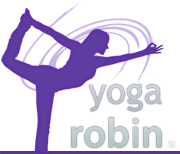Muscle fatigue
With all of this yoga and attention to the emotional heart, next comes muscular pain. It’s an indication of muscle-building, comes up in the form of fatigue, and occurs where we need it most sometimes. I invite the Muscular System into my focus, mainly the voluntary muscles—the ones which contract when stimulated by neurons when I consciously use them to move my leg, arm, etc. and relax by being passive; they are known as the skeletal muscles. I’m also working my involuntary muscles—the ones which work in the walls of the intestines, blood vessels, heart (but I’ll get into this later).
Muscles inflamed with repetition
When I learn a new yoga pose and repeat it daily, this new repetition of certain skeletal muscles are in pain, tightened, and in great need of care. I get monthly swedish deep tissue massages by a CMT to stabilize the muscle tissue structure—muscle cells separated and wrapped in layers of connective tissue, enclosed in fascia, connected to the bones with tendons.
Muscles contract when I use them, but my feat is to relax them completely after using them so that their contracted state doesn’t build up creating a knot, and touching nerves that trigger unnecessary (and imbalanced) compensations with other muscles. Much of this is reversed and calmed into a stable state after massage.
Fatigued muscles lack oxygen
Why does muscle-building cause fatigue? Healthy muscles (called "red muscles”) have a reserve oxygen supply, permitting them to contract and relax repeatedly while maintaining cellular respiration which resists muscle fatigue. The myosin protein in muscles causes contraction and relaxation acting as enzymes, which break down ATP molecules (adenosine triphosphate). ATP provides energy so we want to keep an ample supply in our muscles. When ATP is used up too quickly without the oxygen to support it, muscles (called "white muscles") become quickly fatigued with the build-up of lactic acid—an indication that muscle cell oxygen has been depleted.
Lactic acid build-up not only causes discomfort but also is delivered to the liver (and too much on this organ causes the Digestive System to overwork). Therefore, I want more red muscles and enough ATP to not only contract muscles but also relax them.
Drinking water flushes lactic acid and toxins
Sometimes I'm told that the TCM pressure points (Traditional Chinese Medicine) on outer top of my feet are sensitive and painful. This points to liver aggravation (eating oily food and extra lactic acid build-up). Drinking a lot of water dilutes this. Drinking water is not good to do before morning Ashtanga yoga, as it makes me spiritually heavier. But drinking water during the day, especially with muscle pain, flushes out the toxins which creates relief; it's become my post-yoga activity.
When I'm most sore, I soak in an Epsom salt bath. Why does this soothe muscle soreness? Of course, it's because the magnesium in epsom salts—absorbed through the skin—helps relax skeletal muscles by flushing lactic acid build-up in the muscles. Magnesium is an abundant mineral in our bodies and its role in our overall health is important. It can be found in over 300 different enzymes in our body and is vital for activating muscles and nerves, creating energy in the body and efficiently digesting proteins, carbohydrates and fats. Other ways to replenish magnesium are eating organic foods, lowering sugar intake and lowering stress.

 atp
atp